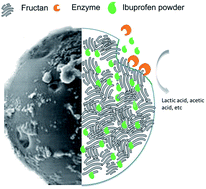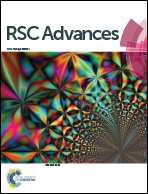Coacervated liposoluble fructan-based host–guest microspheres as unique drug delivery materials
Abstract
A fundamental requirement in drug delivery design is the development of robust, target-specific, biocompatible, and pharmocokinetically-active cargo carriers. The use of natural polysaccharides for drug delivery has been a subject of long standing interest because they display many of the necessary aforementioned attributes. Herein, the current research details a new approach to a drug release system composed of microspheres derived from unique acetylated Agave tequilana Weber var. Azul fructans. The driving force and novelty behind this approach is that these fructans are liposoluble while still being able to be metabolized by bifidobacteria (lower GI, native colon bacteria). Modification of fructan solubility through acetylation supported the preparation of microspheres by precipitation–coacervation, thus providing a new synthetic approach for polysaccharides-based cargo carriers to facilitate the encapsulation of liposoluble cargo molecules such as ibuprofen. It was found that the enzymatic activity of B. animalis, a representative bacteria found in the human colon, was reduced, albeit, but not at the expense of providing a very compellingly favorable drug release profile.


 Please wait while we load your content...
Please wait while we load your content...